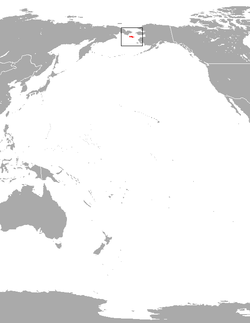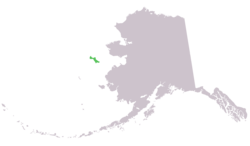| Saint Lawrence Island shrew | |
|---|---|
| Scientific classification | |
| Kingdom: | Animalia |
| Phylum: | Chordata |
| Class: | Mammalia |
| Order: | Eulipotyphla |
| Family: | Soricidae |
| Genus: | Sorex |
| Species: | S. jacksoni |
| Binomial name | |
| Sorex jacksoni | |
 | |
| Saint Lawrence Island shrew range | |
 | |
| Sorex jacksoni range | |
The Saint Lawrence Island shrew (Sorex jacksoni) is a species of mammal in the family Soricidae. [3] It is found only on Alaska's St. Lawrence Island. [4]

